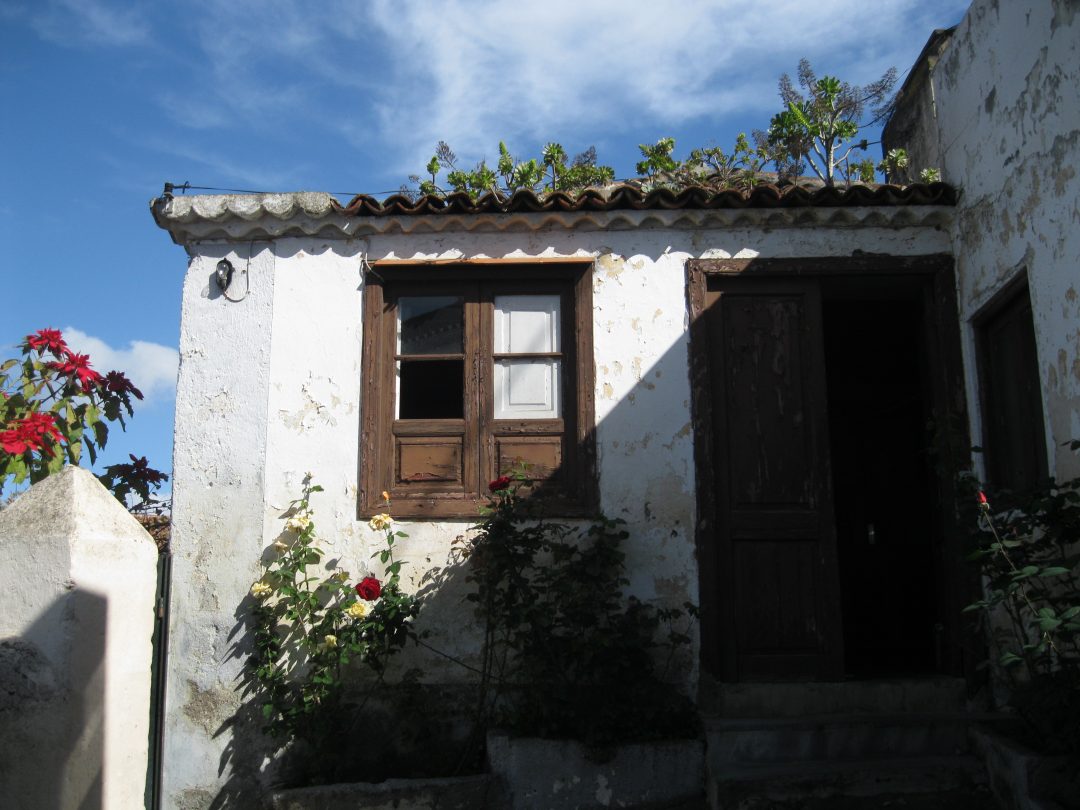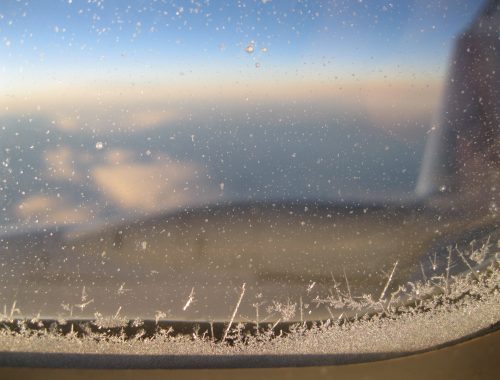“Water mills? I want to see them!” enthused Ben over the Tenerife guide. Demonstration of how local water mills – molinos de agua – work, sounded very tempting. For years they had been making flour, called Gofio, from roasted cereals. Historically one of the Canary Islands’ fundamental foods, which is still used to prepare all sorts of stuff – from soups through porridges to desserts. If we wanted to see the water mills in action we would have to hurry, because the opening time should have finished soon. And so we got on our way – more like sprinted out – on our first trip to the valley of Orotava, a little town about half an hour drive from Puerto de la Cruz.
The first problem we encountered was that the mills we were looking for were not actually in the valley. We parked in the middle of the town and headed up, up and further up, until, out of breath, we reached nearly the top of the hill from which there was a view of the Orotava houses spreading all the way to the sea.

While the view was very nice there was no trace of any water mills though the map insisted we were on the spot. We wandered around in puzzlement for a bit, checking the map periodically, till we found a small, unmarked building stuck to a wall of a house and decorated with flowers.
A new problem appeared – there was nobody here. The door was ajar but our calls were not answered. Though everybody here is very friendly, stepping into someone’s living room seemed a bit too friendly. Our desired destination looked completely abandoned, but eventually, we received a reaction. One of the locals came to our help, an older gentleman who was across the street merrily chatting to his neighbor.
By the way, it was fascinating that it was enough to climb a hill and from Orotava town center, heavy with tourists, we got to a place which felt like a sleepy village. Nobody spoke English but, with the help of our arms and legs, we explained what we wanted. The gentleman opened the door of the house and roared: “José! JOSÉ!” Even after his shouting, the custodian of the museum didn’t appear.

Our willing helper came back out and shrugged. According to the guide the museum was supposed to be open but things here were obviously playing according to Spanish time which says “life is too short to abide by clocks”. The landlord probably went to have a glass of sangria or just to chat with the neighbors. So we also adopted the Spanish approach to life, sat by a fountain, and enjoyed the view.
On the way back down we at least studied the information boards along the road, where they told us about the molinos de agua. We learned that there were originally thirteen of them, ten surviving nowadays. The mills were organized into a row one above the other on an imaginary “water road” – a canal, which was also used for washing clothes or watering cattle. These were places where people met, gossiped, and sang.
The mills are from the 16th century and served many families as a source of livelihood. They also played a fundamental role in times of famine caused by restrictions to food imports to the Canary Islands after the First and Second World Wars and during the Spanish Civil War. During the time of shortages, they often milled flour from fern rhizomes.
The mills were powered by water till the mid-20th century when thanks to the gradual depletion of water sources on Tenerife they switched to electricity. Some of them are still working though mostly as tourist attractions.
In the end, we didn’t see them prepare gofio but on the way to Orotava, we stopped in a pleasant traditional restaurant Sabor Canario and had a gofio dessert. It was truly delicious!






1 Comment
[…] we instead of visiting water mills accidentally viewed quaint houses in the top part of Orotava, we then headed to another interesting […]